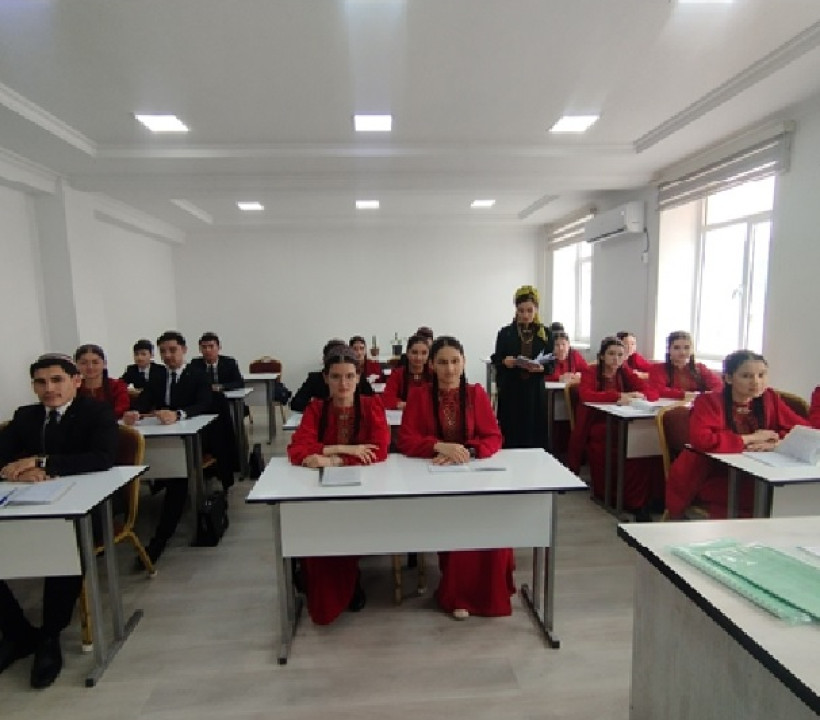Economic system
According to the objectives of the "Revival of a new era of a stable state: the National Program for the socio-economic development of Turkmenistan in 2022-2052" and the "Program of the President of Turkmenistan for the socio-economic development of the country in 2022-2028", the neutrality policy of Turkmenistan is of global strategic importance. as a tool, it is aimed at further development of cooperation with world and regional countries, as well as with reputable international organizations. Diversification of the state's national economy and expansion of high technologies and digitization processes in the system give a strong impetus to active participation in the global economic space and global economic relations.
In the rapidly developing conditions of the national economy, Turkmenistan attaches great importance to cooperation with various countries of the world in high-tech industries, introducing modern advanced knowledge and management solutions. Implementation of activities and projects arising from the "Program of Development of Foreign Economic Activity of Turkmenistan for 2020-2025", "Foreign Trade Strategy of Turkmenistan for 2021-2030" and documents related to trade, economy and investment systems. relevant works are being carried out. In this regard, important tasks such as creating positive international conditions that contribute to the stable development of the national economy and raising the standard of living of the population, active participation in world economic relations, further development of foreign economic cooperation, and attracting large investments to our country are prioritized.
One of the priority directions of Turkmenistan's international economic activity is aimed at active and effective participation in the implementation of the UN Development Program. International cooperation in the field of energy and energy security of the country, sustainable transport system, ecology and environmental protection, in particular, solving important problems of hydrogen energy, food security and other areas is being expanded.
Among the countries of the world, our country fully satisfies its needs for fuel and electric energy with its own resources, and also exports a significant part of it abroad. Turkmenistan expresses its commitment to a very responsible approach to the effective use of its huge energy potential for the national and public interests, and fulfills specific tasks in this area. One of the important directions of the energy strategy of Turkmenistan, which ranks fourth in the world in terms of natural gas reserves, is to diversify its export to the world market. The adoption by the UN General Assembly of the Resolutions on the safe and sustainable transit of energy resources is a clear proof of this.
The deposits in the Turkmen part of the Caspian Sea are being developed with foreign partners. Construction of Turkmenistan-Afghanistan-Pakistan-India gas pipeline is underway. This new energy bridge will provide a long-term transfer of Turkmen natural gas to the major countries of South Asia, and will serve as a powerful impetus for the socio-economic development of the entire region, business cooperation, and strengthening of peace.
The construction of the solar and wind power station, the internal energy ring, and the Turkmenistan-Afghanistan-Pakistan power transmission system are ongoing. The opening of a power equipment repair and service center in Ashgabat creates conditions for the diversification of the industry.
Turkmenistan is also an attractive country for investment. Huge efforts are being made to increase domestic and foreign investment activity, to strengthen the economic potential of the country's regions, and to ensure sustainable socio-economic development. The initiatives of our state to create a favorable investment environment are highly appreciated in international ratings.
Turkmenistan is guided by strategic tasks and programmatic documents in clearly defined areas and is committed to continuing comprehensive mutually beneficial trade and economic relations with foreign countries, international and regional economic and financial organizations and institutions, and is strengthening efforts on the tasks to be carried out in this area. The policy of strengthening relations with the Organization for Economic Co-operation and Development, the International Monetary Fund, the World Bank Group, the European Bank for Reconstruction and Development, the Asian Development Bank, the Islamic Development Bank, and other financial and economic institutions is being pursued in conducting active cooperation.





